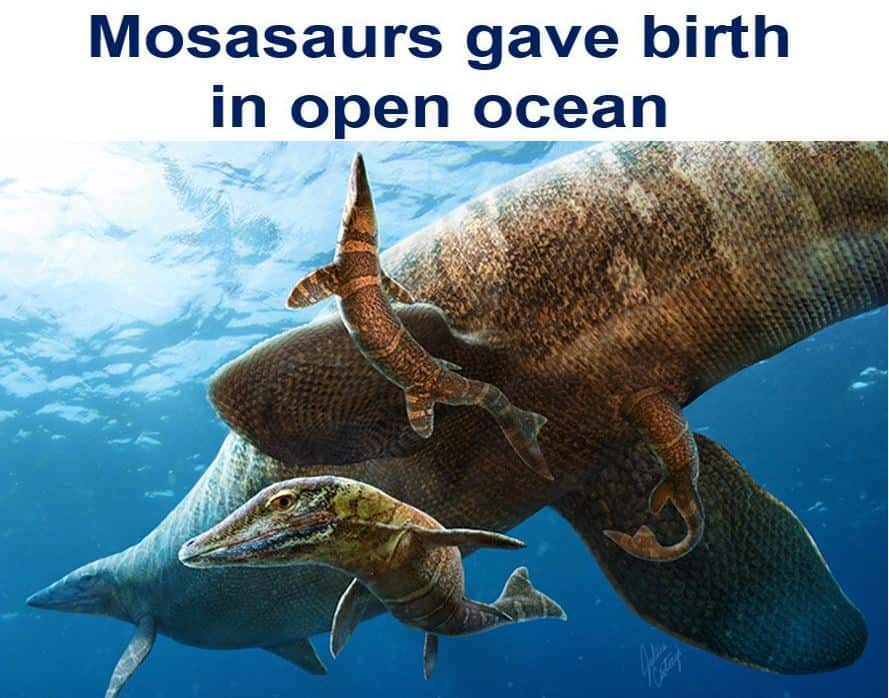Mosasaurs, giant 50-foot-long marine lizards, gave birth in the open ocean 65 million years ago, and not near or on the shore, researchers from Yale University and the University of Toronto reported. They did not lay eggs.
The team of scientists, who wrote about their findings in the academic journal Palaeontology, discovered a new birth story for the fearsome marine lizard that was once one of the rulers of the oceans.
Lead author, Yale graduate student Daniel Field, and colleagues say that recently identified specimens at the Yale Peabody Museum of Natural History suggest that the mighty mosasaurs did not lay eggs or give birth on the shore, but bore their young in the open ocean.

Mosasaurs had their babies in the open ocean – they did not lay eggs. (Image: Julius T. Csotonyi)
Mr. Field, a doctoral candidate in the lab of Jacques Gauthier in Yale’s Department of Geology and Geophysics, said:
“Mosasaurs are among the best-studied groups of Mesozoic vertebrate animals, but evidence regarding how they were born and what baby mosasaur ecology was like has historically been elusive.”
Initially mistaken for marine birds
The researchers described the youngest mosasaur specimens ever found. Mr. Field, who had come across the fossil specimens in the Museum’s extensive collections, said:
“These specimens were collected over 100 years ago. They had previously been thought to belong to ancient marine birds.”
Mr. Field and Aaron LeBlanc, a doctoral candidate at the University of Toronto at Mississauga, concluded that the fossils showed a range of teeth and jaw features unique to mosasaurs. Also, the specimens were found in deposits in open ocean.
Mr. LeBlanc said:
“Really, the only bird-like feature of the specimens is their small size. Contrary to classic theories, these findings suggest that mosasaurs did not lay eggs on beaches and that newborn mosasaurs likely did not live in sheltered nearshore nurseries.”
The study was funded by the Natural Sciences and Engineering Research Council of Canada and the Smithsonian Institution.
Citation: “Pelagic neonatal fossils support viviparity and precocial life history of Cretaceous mosasaurs,” Daniel J. Field, Aaron LeBlanc, Adrienne Gau and Adam D. Behlke. Palaeontology. Published 10 April, 2015. DOI: 10.1111/pala.12165.

